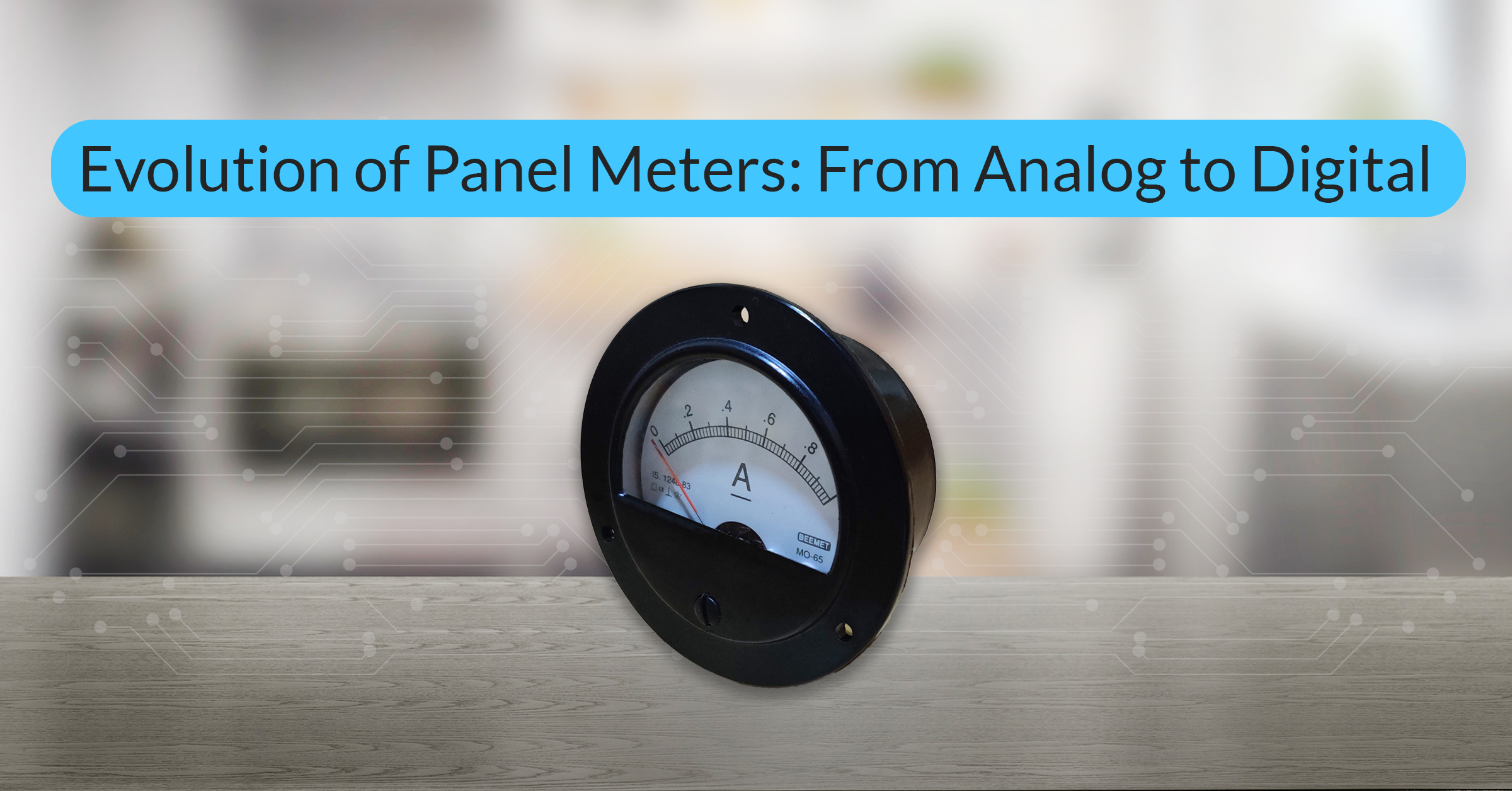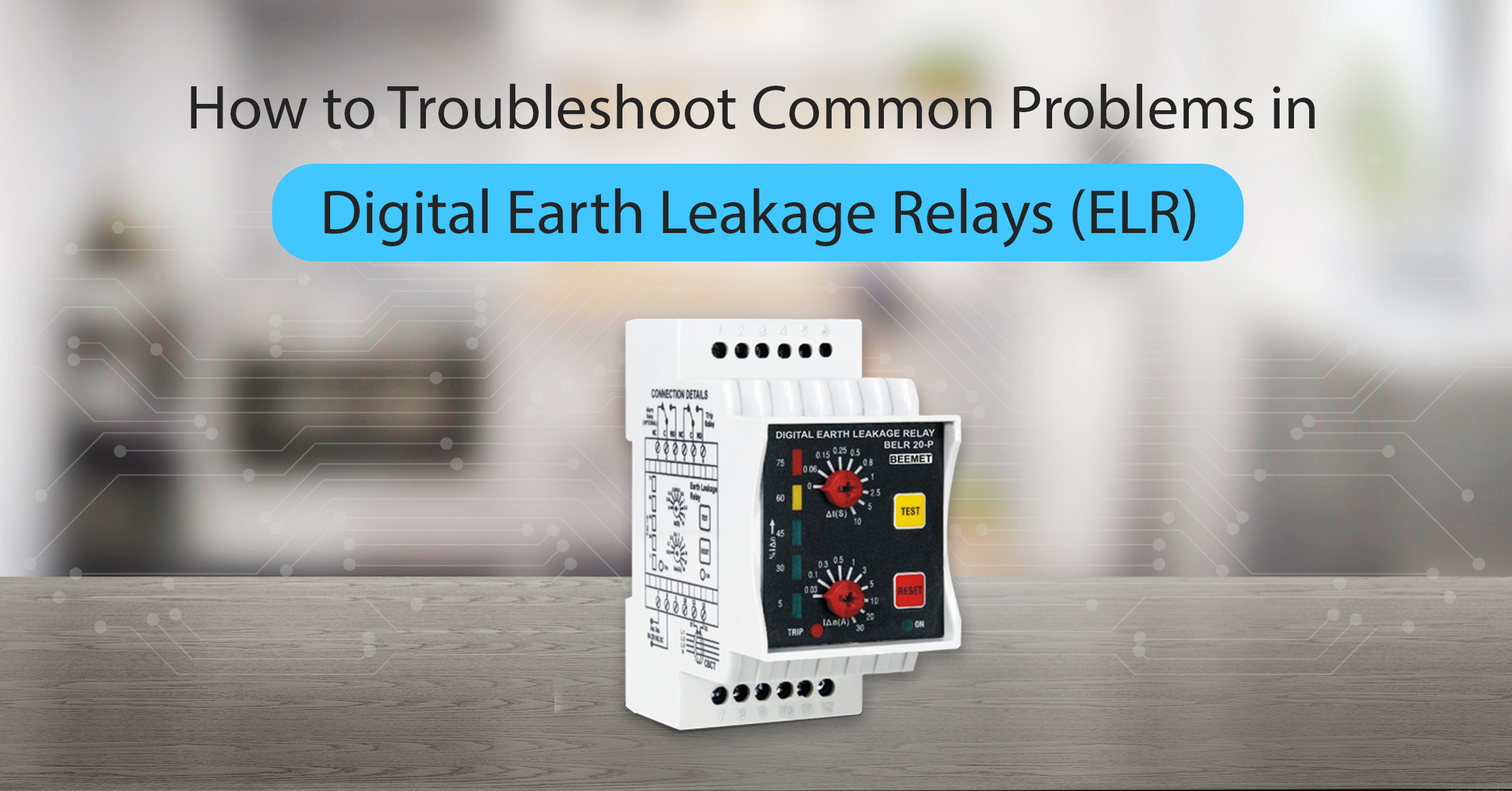Certain engineering revolutions support and catayse entire industry on their shoulders. Panel meters are one such unsung hero. From the traditional analog gauges to precise, feature-rich digital displays, panel meters are a cornerstone of industrial and commercial measurement and monitoring systems. Let’s explore how this gadget evolved over time through history and innovation.
TL;DR
The change from the 1940s analog dials to 2020s IoT-enabled meters is a big step forward in technology. They offer a variety of features that provide industries with precision, durability, and intelligent tracking. But when it comes to accuracy and smart tracking, digital is a shining winner.
What is a Panel Meter?
Consider a control room without indications where machines hum and switches blink but voltage and current values remain unknown? Could be disastrous, right?
This risk is efficiently managed by panel meters.
At its core, a panel meter measures and displays voltage, current, frequency, power, and energy on an electrical control panel. It uses sensors to convey signals, which the meter then processes into a visual display. This display can be either analog (a marker on a scale) or digital (a numeric readout). These meters are used to monitor and control in utilities, laboratories, energy systems, and industries.
Analog Panel Meters – A Look Back
Before digital meters came out, the market loved conventional meters with needles that moved back and forth. Originating in the 1940s, it was built with electromechanical mechanisms. The first ones were made of metal or bakelite and had glass lenses. They measured simple things like DC/AC voltage, current, and frequency. By the 1960s, tougher industrial variants were available for maritime, military, and mobile use.
Analog panel meters had some advantages:
- Easy, cheap, and dependable.
- No need for outside power.
- Helps spot trends and ranges (needle movement is visible).
At the same time, these meters have certain limitations:
- Reduced precision (~2%).
- Noise-sensitive and “needle dancing.”
- Fewer features than standard meters
For a deeper dive into their types, design, and working, check our detailed guide on analog panel meters.
Rise of Digital Panel Meters
Then digital panel meters came along and changed everything in the 1970s. Equipped with digital screens, these meters became popular because of their accuracy (up to 0.05%) and greater resolution. Further, advancements in microprocessors, data logging, and various communication protocols (e.g., RS-232, Modbus, Ethernet, and USB) sped up developments from the 1980s to the 2000s.
Digital panel meters have smart features that make tracking more reliable and efficient. In case of a problem, they can set off alarms or automatic switches to get rid of electrical noise and keep the numbers steady. A lot of these devices have IoT and Wi-Fi, which lets you check on info from afar. These tablet gadgets are simple to use and have bright pictures. Many types keep an eye on electricity, temperature, speed, and load at the same time, which makes process management better.
Pros:
- Very high precision and consistency
- Digital screens that are clear and easy to use
- Easy to care for
- Strong and small design
Cons:
- Possible need for regular checking
- Impacted by power outages
- Costlier up front
- Complex traits need training
You can explore more about their features and benefits in our complete guide on digital panel meters.
Why the Shift? – Industry Trends and Advancements
The switch from analog to digital panel meters was more than just a technological enhancement. It changed corporate operations. Automation, sustainability goals, and data-driven decision-making have made meters smart instruments that improve efficiency.
Policy and Automation: Industry used digital solutions due to government mandates, smart grid policies, and remote monitoring.
Smart Integration: Electric vehicles and renewable energy require real-time monitoring, power sharing to avoid overload, and two-way communication.
Cost-effective and Accurate: Digital meters eliminate manual errors and offer advanced features at prices that beat analog ones.
Key Differences Between Analog and Digital Panel Meters
Now, let’s compare these electrical meters and understand how they are better from one another:
Aspects | Analog Meter | Digital Meter |
Display | Needle, graduated scale | Numeric LCD/LED |
Accuracy | Moderate, user estimation | High, fixed readout |
Durability | Electromechanical, can wear | Solid-state, longer life |
Cost | Lower, basic setups | Affordable, more features |
Features | Limited, basic reading | Alarms, data output, logging |
Power Required | Often none | Needs power source |
Applications Across Industries
Often overlooked, electric panel meters keep enterprises running efficiently. The following is a rundown of some of the many industrial applications of this meter:
- Energy & Utilities: It helps with bills, finding theft, keeping loads even, and adding green energy.
- Industrial Plants: It monitors voltage, current, frequency, and power factor for safety.
- Commercial Buildings: It controls energy, heating, cooling, ventilation, and sub-meter tenants.
- Transportation: It is used to track speed, sync multiple power sources, and use rugged analog meters.
- Medical & Research: It performs precision testing, calibration, automation, and track equipment
Conclusion
The evolution of panel meters over the years has supercharged electrical system monitoring and control. Selecting between analog meters vs digital meters comes down to what you value more: simplicity and reliability or precision and complex functionality.
At Beemet, we offer high-quality panel meters for every purpose. Explore our wide range and find the right fit for your needs. Reach out to Beemet today!
FAQS
Solid-state electronics, which have fewer parts, make digital meters last longer. Pivots and springs in analog meters may wear out or need repair.
Panel meters record energy use in real time, helping businesses reduce waste, balance loads, and improve efficiency. Clear readings make it easier to act and reduce power expenses.
Many digital panel meters may communicate through network cables or wireless systems. This helps them connect to smart grids, IoT systems, and remote screens for greater control, automation, and planned maintenance.
Manual meters work better in noisy, rough, powerless conditions. Their moving line lets you spot patterns without looking elsewhere.
Sensors, microchips, and LED/LCD panels in digital panel meters need external power. This feature offers accurate readings, data storage, and device connectivity for better monitoring.



